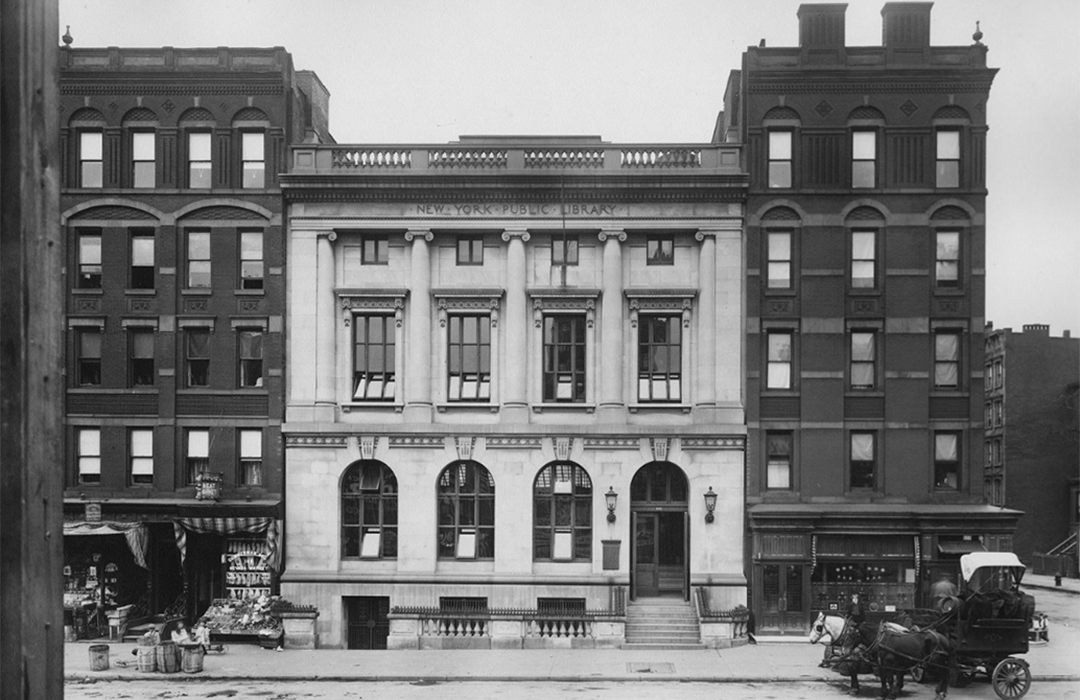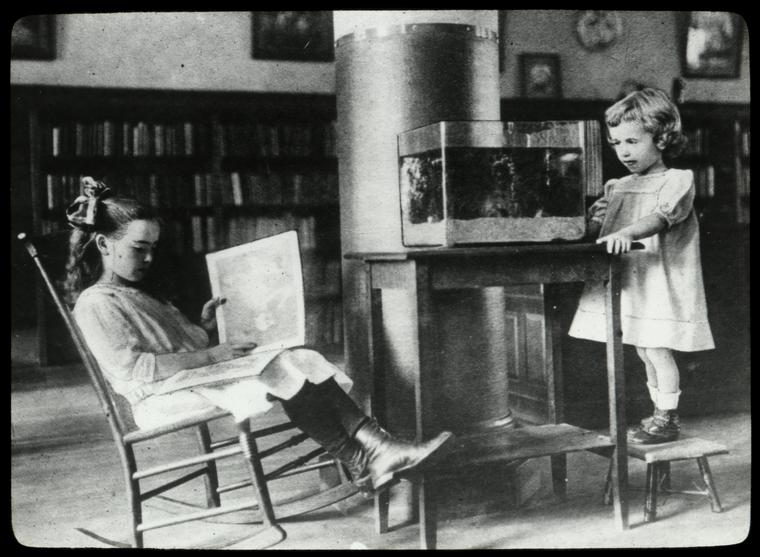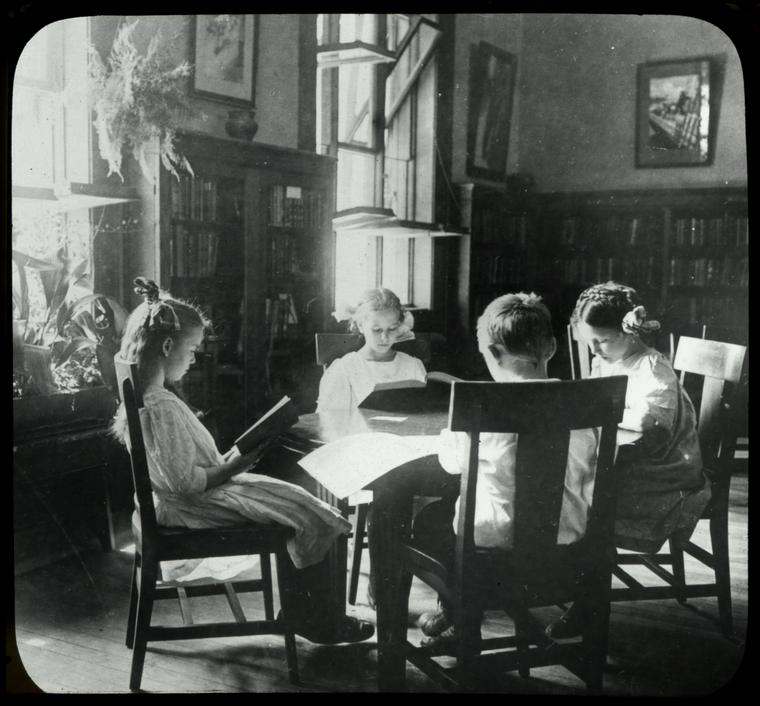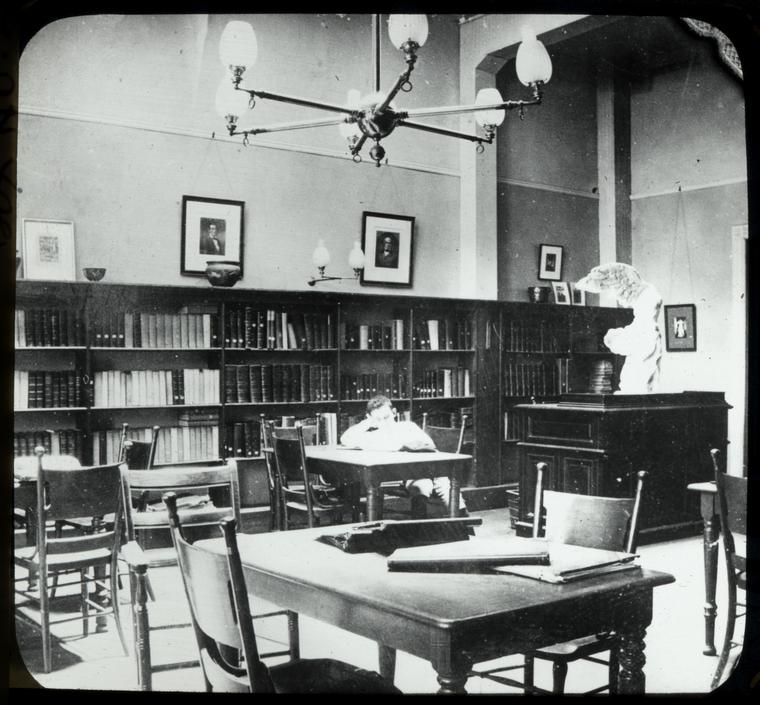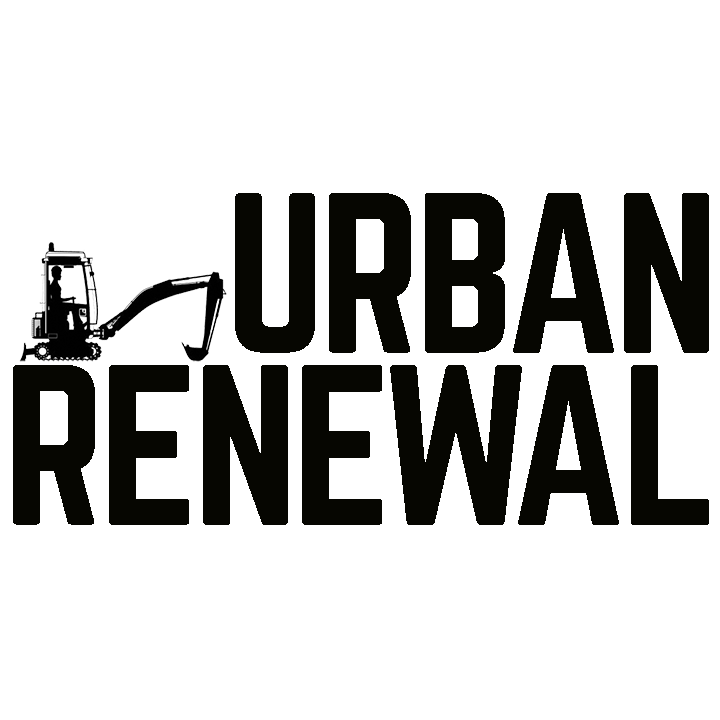
View of 190 Amsterdam Avenue from east; Courtesy New-York Historical Society
The Riverside Library Branch
by Tom Miller
As the population of the Upper West Side exploded, in 1894 the Riverside Association established a neighborhood library. Three years later, it was absorbed as a branch of the New York Public Library. On December 15, 1901, The New York Times announced, “in a year or two it will occupy one of the buildings to be erected through the generosity of Mr. Carnegie.”
Millionaire Andrew Carnegie, who had grown up in Scotland too poor to own a book, had now offered the City of New York $5.2 million to build free circulating libraries. The condition was that the city would provide the land and maintain the libraries. There would be 53 Carnegie libraries, 30 of them in Manhattan.
190-192 Amsterdam Avenue [was] for Carnegie Library No. 8.
In June 1902, the Board of Estimates approved the site at 190-192 Amsterdam Avenue for Carnegie Library No. 8. On December 18, 1902, one month after the cornerstone was laid for the its magnificent New York Public Library, the architectural firm of Carrère & Hastings filed plans for a three-story, limestone-clad library. Construction would cost $75,000—or around $2.25 million today.
The neo-Classical design closely followed that of the other Carnegie libraries. Above the arched openings of the first floor, stately two-story engaged columns separated the windows of the second and third. A stone balustrade crowned the structure.
The building was formally opened on February 16, 1905 with 10,000 books on its shelves. In the basement level was what The Architectural Record called “a very large assembly room.” The first floor, for adults, included a reading room and an “Adults’ Circulating Room.” The height of the second floor—for children’s use–allowed for a mezzanine. It provided space for librarians’ rooms and restrooms. On the third floor was a reading room with a skylight, and the janitor’s living accommodations.
The assembly room in the basement was regularly used. After there was a “revolt” among the Camp Fire Girls of America in April 1915, the dissenting faction of 28 girls and their leaders met here. The mutiny was headed by Mrs. F. R. Holsington, who complained about the “awfully militant idea” of the Girls Scouts. On April 8 the Brooklyn Daily Standard reported that during the meeting here they formed a new group, the Woodcraft Girls.
The assembly room became a center, of sorts, for the war effort in the summer of 1918. An enlistment office was established for female office workers. The Sun explained, “Women stenographers, including married women who have no children, are urged to apply for Government positions at the Secretarial Relief Committee.” The women would earn the equivalent of $20,000 today working in Washington, D.C. offices.
in April 1915, the dissenting faction of 28 [Camp Fire] girls and their leaders met here
For years following the war, the assembly room was the meeting place of the United States Marine Post, 300. And by 1928, Fianna Fáil, the New York branch of the Irish Republican Party, met here.
Community cultural events played out in the basement room, as well. Lectures were held here, like Abraham I, Horn’s talk on “Methods of Business Organization” on February 5, 1931; and in the summer of 1949 an exhibition of “water-colors of New York and environs” by Danish artist Edgun Wulff was held in the space.
In 1967 the city obtained a demolition permit for Carrère & Hastings’ handsome structure. It was replaced by a starkly modern, single-story concrete library building designed by architect Lewis M. Slingerland.
Tom Miller is a social historian and blogger at daytoninmanhattan.blogspot.com
BUILDING DATABASE
Dig into UWS Social History
Be a part of history!
Think Local First to support the religious institution currently at 190 Amsterdam Avenue:
West End Synagogue
Meet Rabbi Emily Cohen!

